

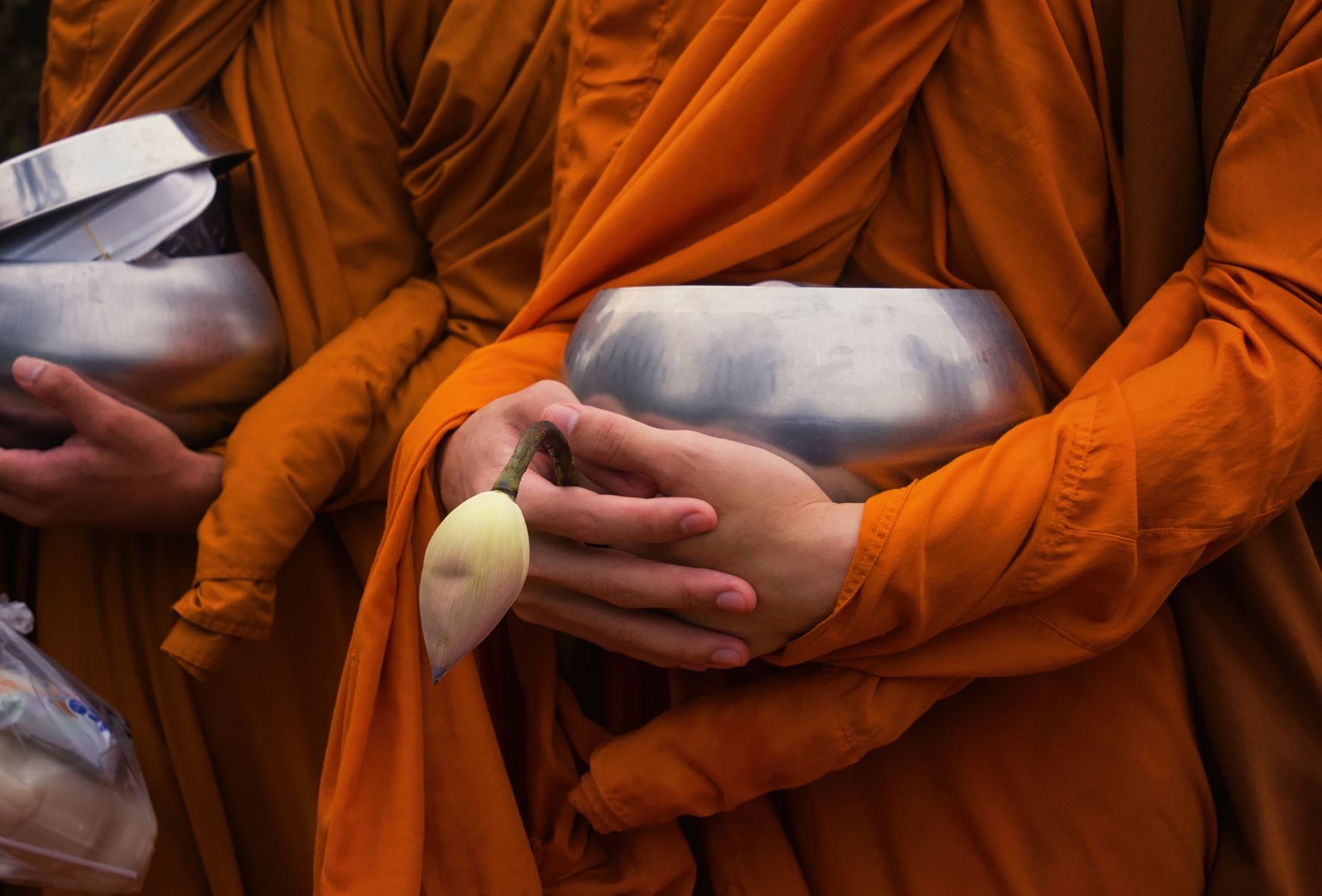














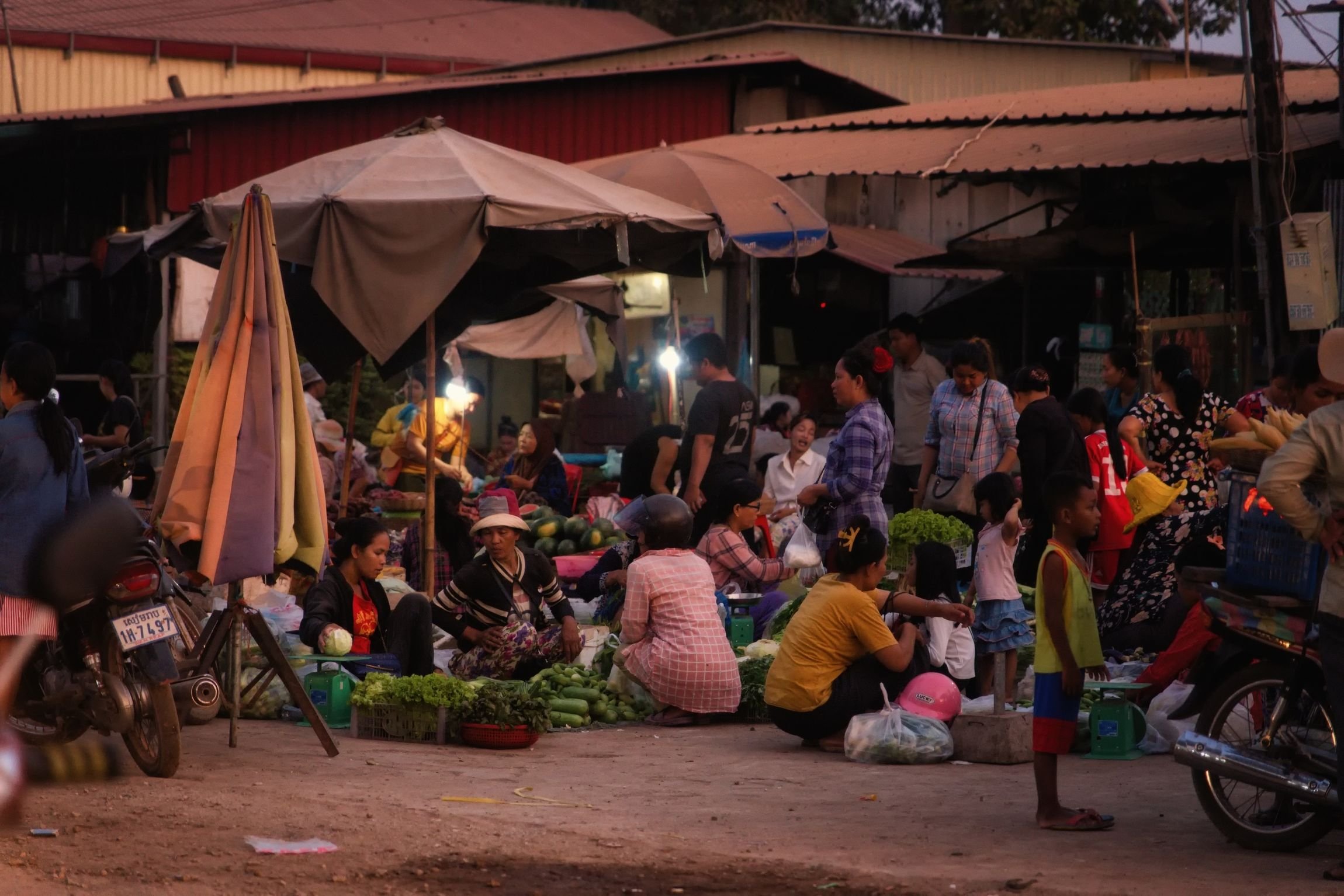

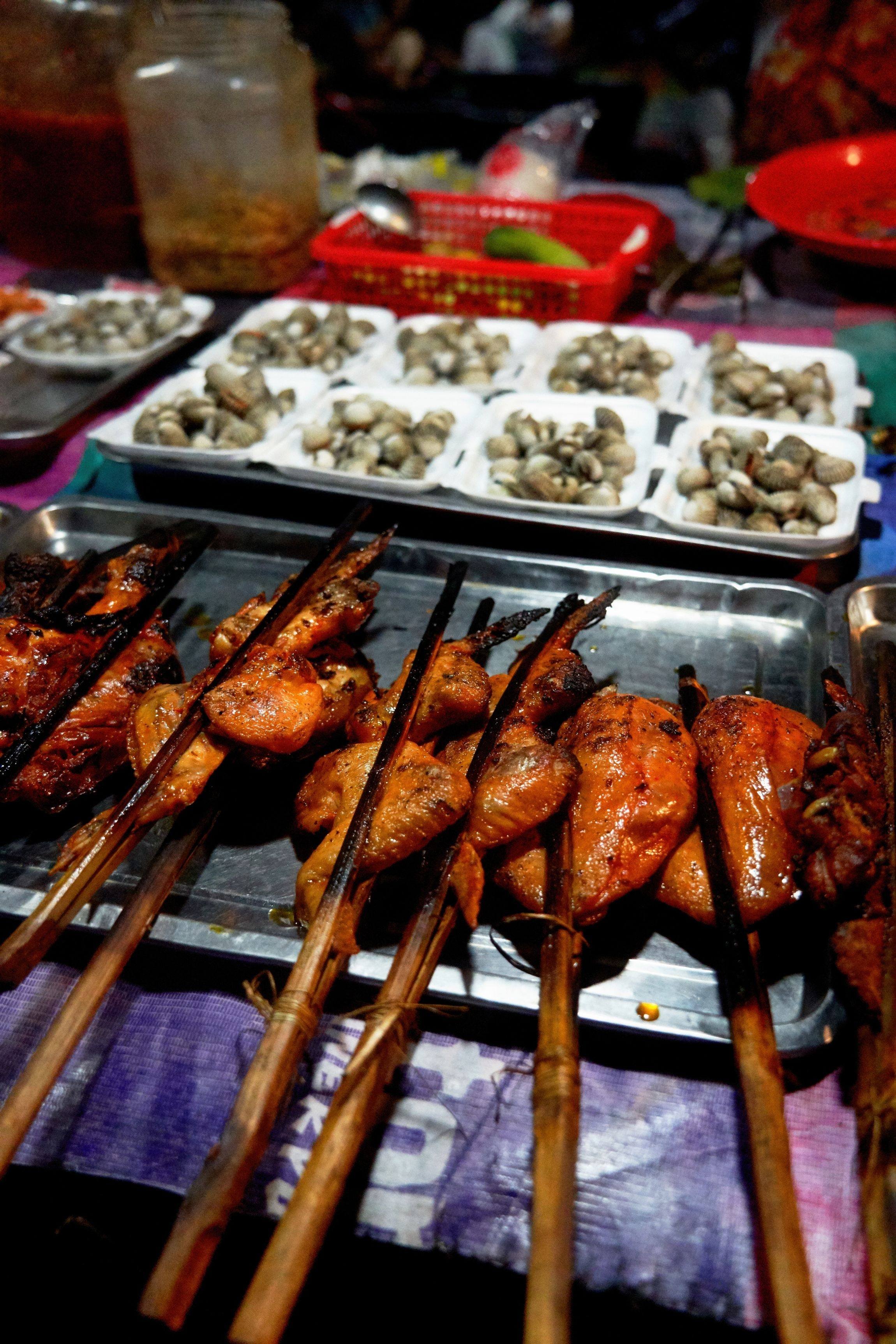


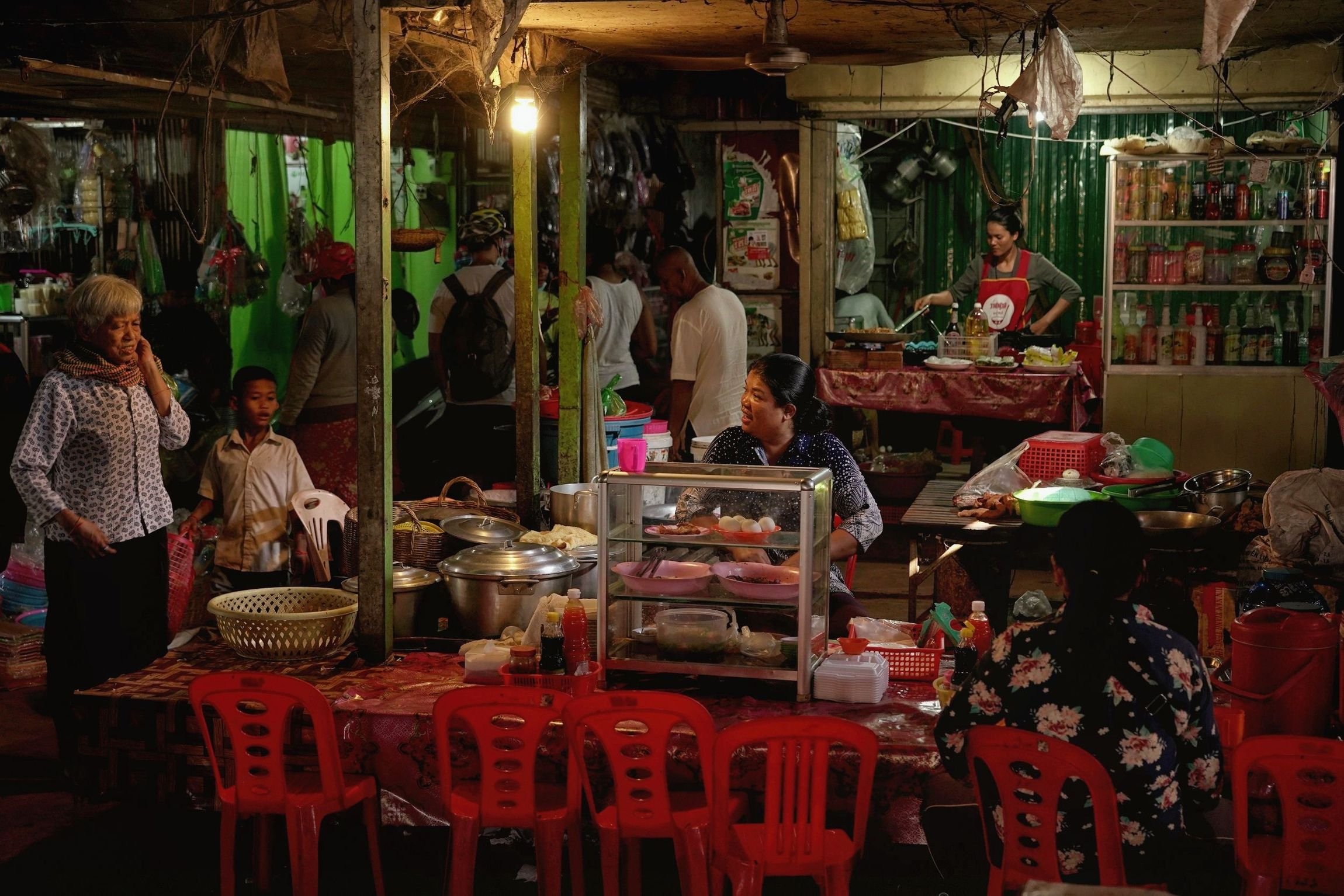
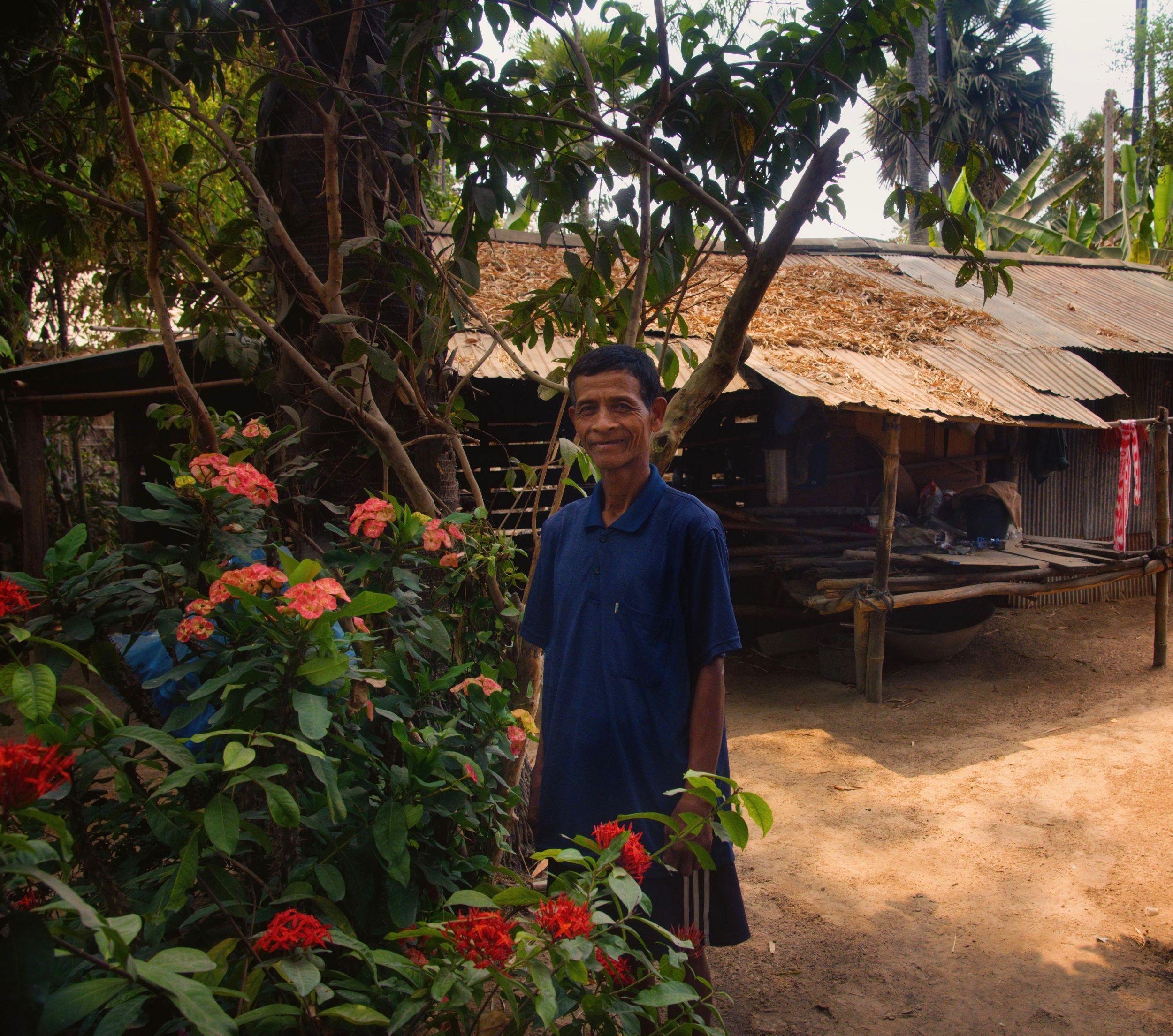











The short version of the larger Trails of Indochina 20th Anniversary video clip designed for YouTube, where we learn about Trails of Indochina from its founder, John Tu Nguyen, and his passion for travel.

Witness initiates paying respect to their elders, before you join the local community in preparing a monastic breakfast, as part of the Alms offering.

Receive a Monk blessing in this uniquely traditional South East Asian ceremony.

Explore the village as a traditional meditative chant reverberates through the perfumed air, before venturing onward to magnificent temples rich with ancient splendor.

Visit Angkor Wat, a sacred temple complex and one of the great wonders of antiquity, with a renowned Khmer scholar.

Your guide will share his vast knowledge and tell the tales of the ancient kings of Khmer history.

His deep understanding of culture and archaeology will breathe life into this immortal monument, built by master engineers creating intricate water systems that fed an empire.

Uncover the secrets of modern preservation techniques used to maintain and restore this impressive structure, strolling through elaborately carved hallways as ancient tales unfold through each Apsara bas relief mural.

Situated at the western entrance of the major temple complex at Angkor Wat, is the 5 meter tall statue of Vishnu, known locally as Ta Reach. Revered by Hindus and Buddhists alike, this mighty king of the ancestors and guardian spirits, carved from a single piece of sandstone, and draped with shimmering saffron silks, stands watch over this sacred site.
In the late 13th Century, when Angkor Wat became a Buddhist temple, the original statue head was removed and replaced with the likeness of Buddha. During a massive restoration project from 2001 to 2003, temple conservationists restored the original 12th century head.

Ta Reach is a significant cultural and religious symbol, a place of daily veneration, not as the Brahmanic god, but Neak Ta, an animistic deity of the local region. Held during the harvest season, an annual festival dedicated to the honour of Ta Reach, where a medium acts as a messenger to receive the individual requests from the local community and grant blessings such as protection, removal of bad luck, prosperity in business, fertility, and to bless marriage.

The only temple erected under King Survayarman II’s rule, Angkor Wat, inspires great debate among scholars as to its intended purpose, either a state temple or funerary tomb. Uniquely positioned, unlike all other Angkor temples traditionally facing east, Angkor Wat looks to the west, coinciding with the symbolic death of the setting sun. The bas-reliefs themselves, which lead in a counter-clockwise direction, provide additional evidence to support this theory. Prasavay in Hindu belief follows the reverse of the natural order. Brahmanic rituals taking place in reverse are customary with funerary services.

Ficus Religiosa or the Banyan tree is a species of fig native to the Indian subcontinent and Indochina. The sacred fig or Bodhi tree, holds immense religious significance in three major religions: Hinduism, Buddhism, and Jainism. In ancient India, it symbolised consciousness or intelligence, referring to the state when a person becomes awake, realising universal truth.
In Theravada Buddhism, the tree’s massive trunk is the site of Buddhist or animist shrines across Southeast Asia. According to legend, Sakyamuni attained enlightenment while meditating under the banyan tree for 7 days and nights contemplating dharma. Battling demons within his mind, he achieved the great awakening at dawn, transforming into a Buddha.
Interestingly enough, not all Banyans are believed to be sacred. To hold religious significance, each tree must be traced back to a parent of the primordial Jaya Siri Maha Bodi of Sri Lanka, one of the oldest living human-planted flowering plants in the world. This ancient tree is a direct descendant of the earliest Bodh Gaya in Bihar, India, the believed site where Buddha gained enlightenment.

Spend the evening with your private guide, gaining genuine insight into Cambodian cuisine the way the locals like it. Your journey begins in the early evening by tuk tuk.

You will make several stops around the town to sample the delicious snacks available on almost every corner, walk through the alleys and side streets around the old market area, tasting as you go.

Have a local beer or two if you wish to wash all the tasty morsels down. You will rejoin your tuk tuk where you will continue on to Angkor Kyung Yu road, otherwise known as Road 60, where busy street food stalls well away from the cosy tourist bars line up along the streets.

This area is hugely popular with local families who come out to dine in the early evening, it’s a veritable feast for the senses. Sample a range of exotic fruits, grilled meats and, if you’re brave enough, fried insects. Cambodians love to eat, and virtually anything is on the menu.

A stop at a local restaurant will ensure that even those with the most hearty appetites will not go hungry. Finish the evening with a quick stop to sample a traditional Cambodian Tipple with a twist, before returning to the comfort of your hotel.

Travel to a local house near Angkor Wat, where you will have the unique opportunity to glean a personal account of survival of during Pol Pot Regime. Khean Prang was born in 1950’s Cambodia, when the country was undergoing a rapid societal shift towards modernity. The city was alive with music, famous artists, writers and royalty. French colonialism was over, and a new legacy was being built for a culturally vibrant Cambodia. As a Temple conservationist, Prang worked to restore ancient Temples to their former glory. His parents tended to the family farm. Life was one of stability and prosperity.
Tragically, that was all to change, as Lon Nol and his troops took power and the Khmer Rouge uprising began. Drafted to fight against invasion, Prang saw his Temples taken hostage as the Khmer Rouge HQ before the city fell under siege. His is a powerful story of overcoming adversity, the will to survive, of tragedy, loss, the fight for the restoration of peace and the happiness he now enjoys with his extended family today.

Tonle Sap is one of the great freshwater lakes in Asia, fluctuating between 2,500sq km in the dry season to an impressive 12,000sq km in the rainy season when the Tonle Sap River reverses direction to fill the lake.

There are over two million people who live and work on and around the Tonle Sap. Spend a full day with your camera photographing this challenging yet beautiful mix of landscapes, animals and people.

This rich ecosystem, famed for housing over 100 varieties of water birds, crocodiles, turtles, macaques, otter and other wildlife, also supports one of the world’s most productive freshwater fisheries.

Capture portraits of the towns villagers at the lake’s monasteries, floating villages and vibrant local market.

Landscape photographers will delight in the expansive scenery from a village perched on 10m high stilts, looking across the rippling water in the early evening light of magic hour.

Vietnam has a longstanding tradition of making and flying kites stretching back over a thousand years. Historically, farmers believed kites carried their wishes to the gods. 300 years ago, kites found their way into the Hue Royal Court, founding Hue’s tradition of colourful and elaborate kite design. Spend the afternoon with a kite artisan who’s been crafting kites for over 45 years. Listen as he shares his passion while creating a kite yourself.
